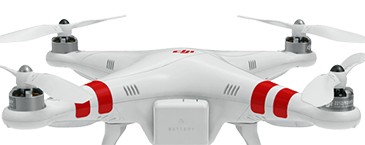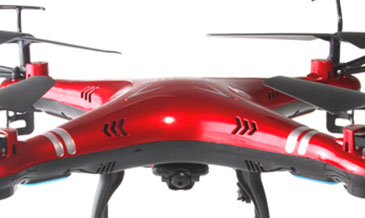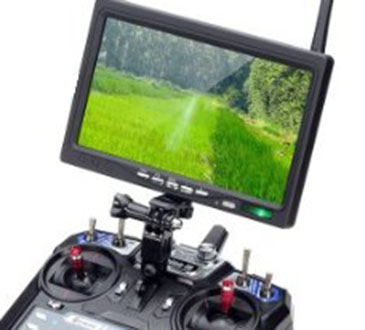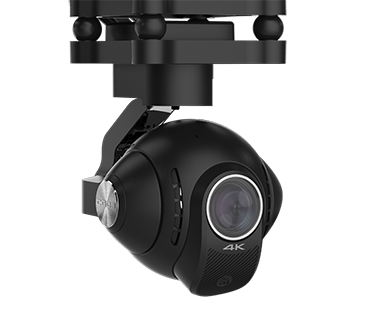…Understanding The Terminology.
The Drone Diaries starts here.
Okay, so we’ve established that it’s best to begin with a cheap – sometimes called amateur or hobbyist – drone. Learning to fly won’t be easy. Those cute Youtube videos where someone opens the box, switches on the drone, and simply starts flying and taking amazing videos, don’t tell you that the operator has several hundred hours of flying time. Nor that this was Take #101.
And deciding to buy a cheap one has really only narrowed the choice to several dozen. But, who cares? They’re all more or less the same, right? Find one you can afford, and buy it. Simple.
Just to learn to fly, that’s not a bad solution.
But if you’re hoping your first drone will last a while and will do something useful, then, no, that’s not a good way to pick one. You’ll get it home, or it’ll arrive one day by courier, and you’ll quickly discover that a few features you thought were on all drones – are not, or the video camera you assumed was included – isn’t.
So, you’ll maybe do as I did, and you’ll start reading the specifications, to pick just the one you need. And here’s where the problems start. Specifications are written in gibberish. So, I’m afraid you’ll have to start by learning a whole new language.
And that task can be a little harder for me, as by default, I get the descriptions in Thai. On most websites I can select English, but the translations are either done by Google translate – which makes a total dog’s breakfast of Thai-English translations, or done by someone who was having a let’s-piss-off-the-farangs day. Case in point…
Many of the translations have a “How to use” section, and on most of them, Item 1 says:

“Pedro brought tea to the port via USB.”
I kid you not. See right…
And then you find “Turn on the air force.” Do you use the tea to do that? Or perhaps Pedro turns on the air force. Best not to think about that.
So then I have to cut and paste the make and model names into Google, and find a description that makes more sense, but is still written in gibberish.
As I say, you can’t pick the features you need unless you understand gibberish, so let’s start with the translations. Some of these features all drones will have, some will be options. First the whacky definitions. (Hint: the real definitions are down below)…
- Headless Mode:
Useful if you happen to be directly descended from someone who was sent to the guillotine during the French Revolution. - Yaw:
What your son says when he sees your propellers slice through the wife’s silk underwear hanging on the washing line. As in “Yaw gonna get shiffer this.” - Pitch:
What the salesman said to make you spend four times more than you’d intended. This can result in more yaw than you wanted. (See above). - Throttle:
What happens to you when the credit card bill arrives. - First Person View: and Roll:
When the first person who views your attempts at flying rolls on the floor in hysterics. - Trim:
What happens to your grass when you land upside down. For the tenth time. - Line Of Site:
What the wife tries to keep you in as she’s aiming the shotgun. (US models only.) - Bind:
What you’re in when you realize she’s changed all the locks, and now it’s just you and your drone.
Okay, let’s get serious. First some of the optional features, by which I mean, features a drone may or may not have, and that you & I need to think about when deciding what to buy…
- Headless Mode:
The remote controller will have a joystick that moves in four directions, to send the drone forwards, backwards, left and right. Well, it moves in all directions so you can for instance go left while going forward. But let’s keep this simple for now. This is normally the stick on the right side. Sounds easy enough. But when you look at a drone, which way is forwards?
In the photograph on the right you can see some red bands. I’m assuming they tell you which end is the front … not that they really have “ends.” Some drones will have helpful flashing LED lights underneath, red at the front and green at the back. Or is it…? Other drones may have some pseudo bodywork in the middle, which should help you know which end is which.
Except, when your drone is fifty meters high and a hundred meters downrange (I thought I’d sex this up with a little NASA terminology) can you really see stripes, lights or bodywork?
Probably not, but why would you care?
So, imagine you’re merrily flying your drone down the street, and above the street of course. You push the stick forwards and off it goes. Push left and right, and you impress the neighbors with your zigzag left-and-right.
Now you want to bring it back, so you keep turning right through 180 degrees until the front is facing back towards you. But you’re a little off line so you push the stick to the left and what happens? The drone turns to its left, which is your right.
Maybe if you’ve owned radio controlled model cars this is simple. If not, I think it’s really counter-intuitive. A bit like someone swapping the gas and brake pedals in your car – but only when you’re heading home.
(That’s not totally unknown by the way, well – not the random swapping bit. Perhaps the mid 1930s Fiat 508 was a good example of a center gas pedal. I can just imagine the insurance claims “I hit the brakes and the tree just accelerated towards me.”)
Worse; let’s say you’ve been making a nice video as you fly down the road, but on the way back you want to film the houses. So you stop your drone and let it hover (easier said than done) while you spin it (we’ll come to that) ninety degrees to the left. This is because, like me, you’ve bought a cheap drone that has a fixed camera. We’ll come to that too. Now you want to bring the drone back towards you, when what it thinks is its “head” is pointing to the houses on your left.
At this point my brain is hurting. But I think you need to move the stick to the left to make it come back, because you are on its left. Got it?
And you can forget all that nonsense if your drone has the Headless Mode option. When you select it, the drone has what I like to think of as a virtual head. It’s the end that’s pointing the way the drone was moving when you took off, and has nothing to do with which end is considered to be the front. That seems quite logical to me.
So, if it’s coming towards you – no matter which way its real front is pointing – and you select left, it will go left in your line of sight, even though that’s the drone’s right. In the complex example of the drone pointing left to film the houses – no matter – you can still move the stick backwards to bring it back to you.
And all of the helpful guides and videos will tell you – don’t use it. It’s for idiots who don’t know how to fly. Okay, so I’m an idiot. I want.
- Camera:
As I’ve mentioned, some drones have cameras and some don’t. For me, this is non-negotiable. I want to be able – after about ten years of practice – to be able to make great aerial videos.
But, it seems, there’s a wide variety of cameras – in terms of video quality and the ability to take photographs as well as video. It’s necessary to look carefully at the number of megapixels of the camera, as well as video resolution. Reading reviews is also a good idea, as it seems not all cameras live up to expectations.

Then there’s the question of how they store the video and/or images. Some have on-board SD cards. If they do then check the storage capacity. It’s no good flying your drone for ten minutes and only recording two minutes of video because the SD card filled up.
Other cameras have no on-board storage, but rather, they transmit the video via a WiFi signal, back to the remote controller. This is considered to be a BadThing, as the signal can break up, resulting in what is known as “jello” on the recording. Can I get chocolate ice-cream with that?
Some drones offer the option of adding your own camera, but they tend to be the high-end ones, which I’ll also come back to later.
So, for me, I want a drone with a good quality camera that has high-capacity on-board storage. YMMV.
Which brings me to another option…
- First Person View (FPV):
If the camera can send video back to a screen on the remote controller, then you can see live where the drone is and what it is recording. It means, in theory, you don’t need to watch the drone, but can instead look at the screen. This is not a great idea, for two reasons.First; safety. You need to have line of sight to your drone at all times. Your drone might not be moving in the same direction as the camera is pointing.
Second; lag. The image does not quite update in realtime, and the lag increases the further away your drone is from you.

But, if you really like the idea of FPV you can buy one of those bizarre virtual reality headsets, and then your view is the same as the drone’s view. I hope they come with motion sickness pills.
Personally I wouldn’t care too much if my first drone didn’t have FPV, although I can see it would be useful in order to be sure you were recording the view you wanted to record. Let’s say, if it’s included in a drone which has all the other feature I’d like to have, then fine. It’s an added bonus.
- GPS:
In a word: Expensive. My first drone is unlikely to have GPS chips, but maybe my second. They do add some nice features, like – they enable a return-to-home button. Your drone knows where it was when it took off, so it knows how to get home. I know some people who could use that feature after a night at the pub. Also; you can pre-program a route that you want to your drone to follow.And, last but not least, it greatly improves the drone’s ability to hover in one place, because it can constantly monitor its position and height. Incidentally, some drones can do this using barometric pressure sensors, but GPS is better.
So, GPS has been added to my wish list, but not my initial buy list.
- Gimbal:
This sounds to me more like an exotic cocktail you’ll need after a day’s flying, but in fact it’s a method of fixing – usually your camera, but anything you want – under the drone. The gimbal can move through 360 degrees and is controllable from the handheld remote, as is the camera operation. With this, and First Person View, you can very accurately position a camera – without swivelling the whole drone – on whatever you want to shoot. Also, the gimbal is usually mounted on some kind of vibration-reducing material to help prevent camera shake.Great to have, but now for the bad news. As you can imagine, to be able to hang a camera under the drone – maybe something as large as a DSLR – and not smash it on landing, the drone needs to be quite a size. Hence, gimbals are usually only found on the larger and more expensive professional models.
For me, this is another added-to-wish-list feature.

However – and this is GoodNews – I have discovered that one or two of the cheap models do have a one dimension swivel on the camera, so you can at least rotate the drone in the horizontal plane to point at what you want to record, and swivel the camera in the vertical plane to the desired angle. This I will be looking for.
Okay; you’re probably drowning in terminology. Let’s wrap this one up, and next time, I’ll try to give you some idea about how you actually fly the thing. Later, we’ll move on to choosing the right drone for me, and maybe you too. And then much much later, when I’ve finally bought one, you’ll discover I really have no idea how to fly the thing after all.
Drone on. E&OE.

